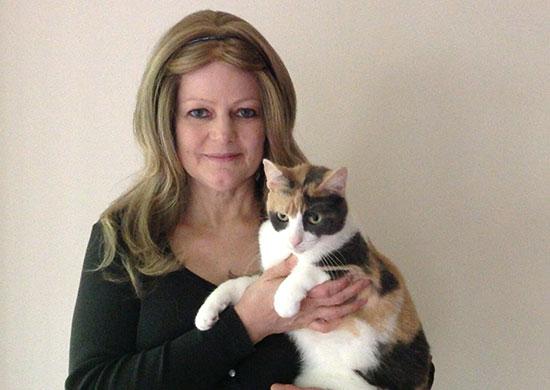This content is archived from the Feline Nutrition Foundation
A Message from the Founder
 Cats are cats. This may not sound like a profound statement, but if you really think about it, it's a concept that many people don't "get." We all know that cats come big and small, yet we think of our companion cats as somehow different than the big cats. If you ask someone to think of what a tiger eats, they think meat. Specifically, raw meat. Yet, if you ask them what they feed their own cats, it's likely to be dry, kibble food. Our little cats are not different when it comes to what they evolved to eat. They evolved to eat a diet of raw meat, just like their larger cousins. Why do we feed them diets so radically different from that?
Cats are cats. This may not sound like a profound statement, but if you really think about it, it's a concept that many people don't "get." We all know that cats come big and small, yet we think of our companion cats as somehow different than the big cats. If you ask someone to think of what a tiger eats, they think meat. Specifically, raw meat. Yet, if you ask them what they feed their own cats, it's likely to be dry, kibble food. Our little cats are not different when it comes to what they evolved to eat. They evolved to eat a diet of raw meat, just like their larger cousins. Why do we feed them diets so radically different from that?
My personal transition from feeding what "everyone" fed their cats – yes, at one point I did feed kibble to my cats – came after I attended a lecture on feline nutrition given by a local veterinarian. She explained bio-appropriate foods and even demonstrated how to make homemade raw food. That was my light bulb moment. It made perfect sense. Why hadn't I ever heard of it before? No cat owner I ever knew had ever mentioned it. No vet had ever mentioned it. I had never questioned what I "knew."
First, I threw out all of the dry food. I made my own homemade raw food. Most of my cats transitioned right away. I noticed changes in my cats immediately. One cat, who had never had a firm stool, only pudding-like puddles, had a firm stool the next day. The amount of stool they all produced dropped by about half. Best of all, it didn't stink any more. Really. With as many cats as we have, this was a very big deal. I'll confess I probably would have switched them to a raw diet for this result alone.
After a couple of weeks, I noticed other changes. They had more energy. They were running around and playing more. It was obvious they felt better. They didn't wake us up in the middle of the night for food. Their coats had become much softer, and felt silky. The chubby ones lost weight. And, they loved this food. Most of them had taken to it immediately, looking at me as if to say "finally, real food." All of my cats were young and healthy and the changes in them were dramatic. Why didn't everyone know about this? How did we end up feeding cats so wrong?
I started talking to people; they all fed their cats dry food. They had never heard of feeding raw meats to cats. You can't choose a better way if you don't even know it exists. I was going to have to do something about this.
Feline Nutrition was what I decided to do.
When you think about it, a cat's natural diet is more than raw meat, it is whole, raw animal. Bones, brains, organs, fur, everything. That's what the raw diet is emulating; the natural, carnivorous diet of a cat. Going to a live prey diet just isn't practical, but we can get pretty close to the same nutritional benefits through commercially-prepared raw diets or homemade recipes. Think of it as reverse engineering a mouse.
I hope you read everything on this site, follow the links to valuable information, learn everything you can and have your own epiphany. I want you to consider a raw meat diet for your cats. It's easy, whether you buy commercially-prepared food or make your own. Your cats will benefit from it, now and down the road. I hope you'll look back, as I do, and wonder how you ever thought to feed them any other way.

Director
Feline Nutrition Foundation
Feline Nutrition Education Society




